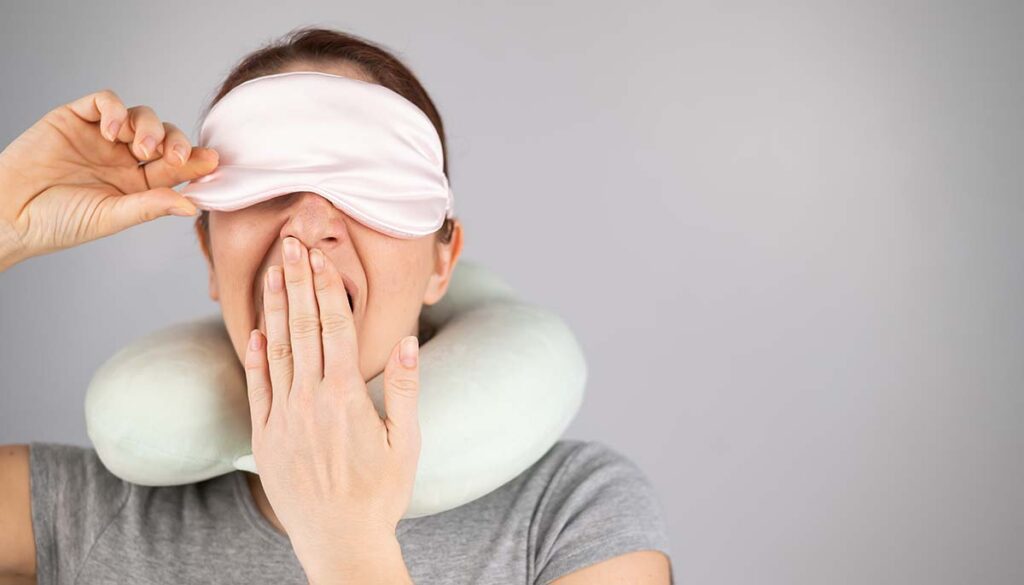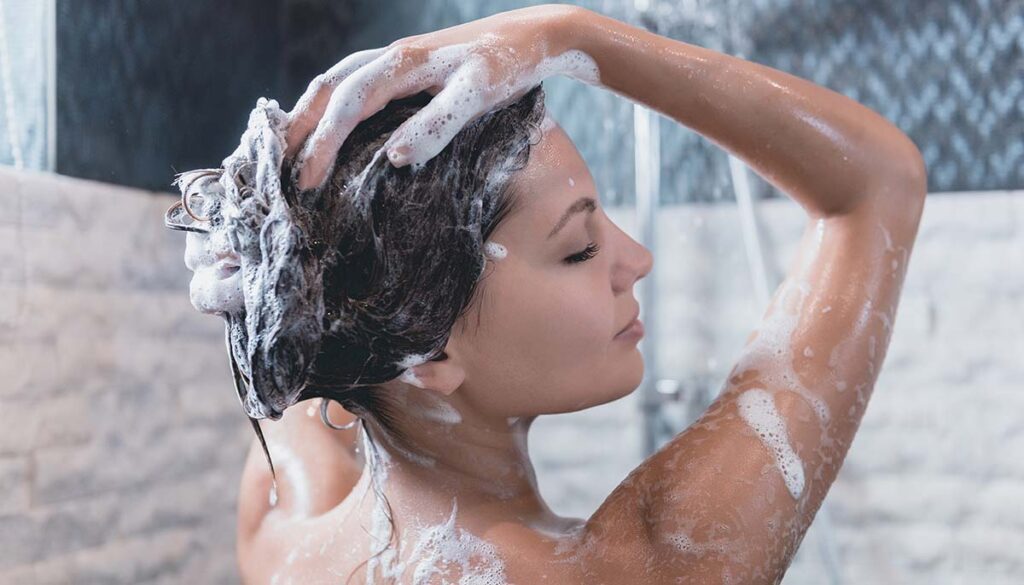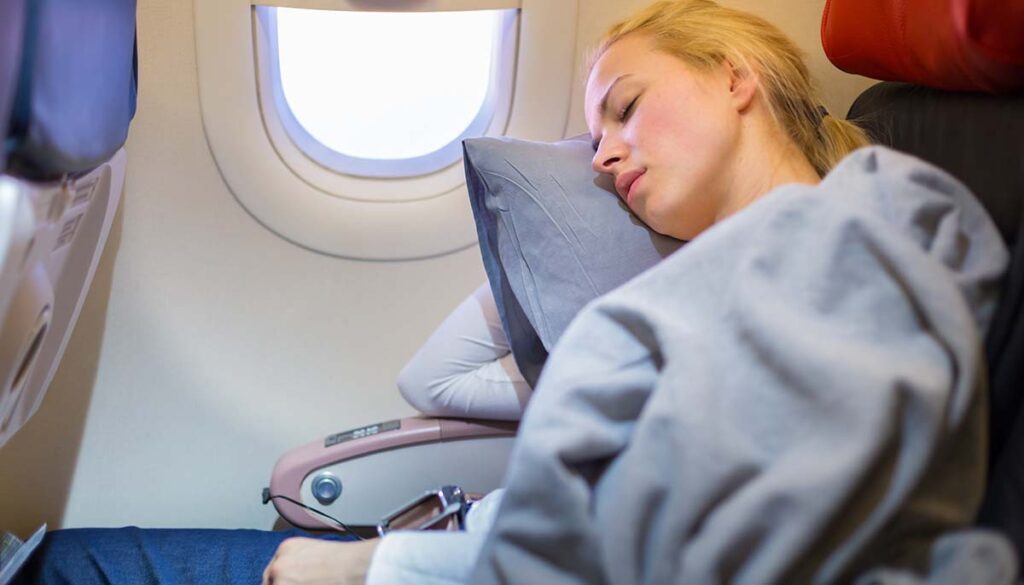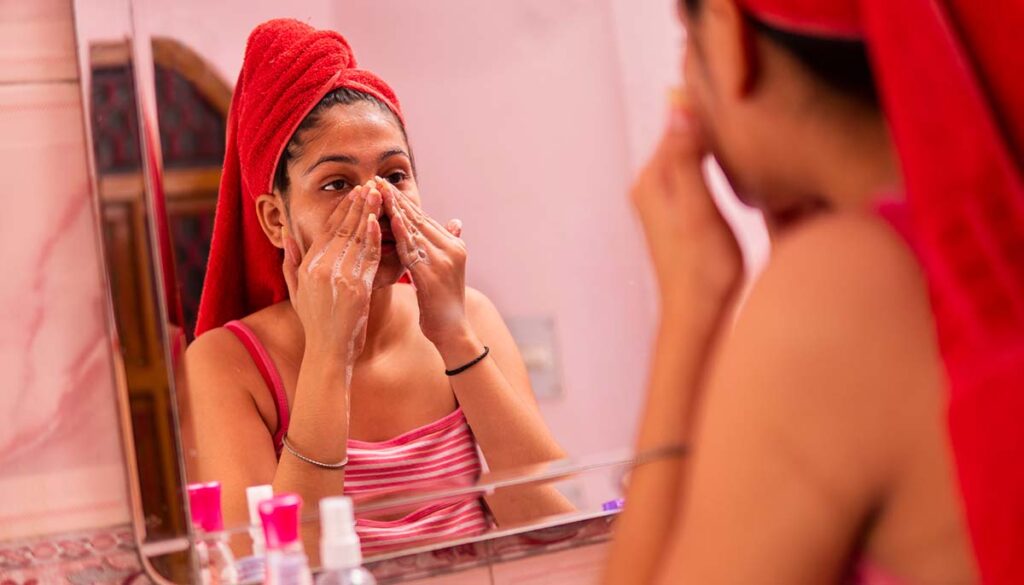While vacationing, it’s easy to throw our good habits out the window, including our typical skin routine. There are cheap and pore-clogging food options on every corner, and cheap hotel food is rarely our friend. Remembering to stay hydrated can become even more of a task while we’re feeling fun and carefree. In fact, as soon as our good time commences, our skin can start to suffer.
Firstly, flying is a well-known skin stressor. So as soon as you set foot on the plane, the problems start. Various studies have found that our bodies can even lose up to 1.5 liters of water on flights that fall right under three hours. Add time to your commute, a time change, and a new environment, and your skin will start to show signs of fatigue and dehydration before you arrive at your destination.
The first step to taking better care of your skin is to assess and avoid the mistakes most of us make. It’s never in our skin’s best interest to stray too far from our typical routine. But forgetting to wash our face can be easy to do when the rest of our routine is suddenly thrown off as well.
If your skin starts flaring up while you’re on vacation, you’ll need to get to the root of the problem. And remember, no matter how badly your skin might be reacting to your unfamiliar surroundings, there’s always a solution a little closer than you think.
Here are some pro-tips for maintaining healthy, happy skin while traveling and the likely reasons your skin acts on the go, according to dermatologists.
You’re Not Getting Enough Rest

You may very well put sleep first no matter where you are, but where you are will always play a role in your sleep quality. Sometimes, there’s no way around noisy neighbors or jetlag, so it’s important to hope for the most peaceful environment while preparing for unexpected disturbances in the middle of the night. If you’re a light sleeper, noise-canceling headphones, a sleep mask, and melatonin might prove to be worthy investments.
When we are rested, so is our skin. And when we aren’t, it shows. Sleep deprivation can lead to skin inflammation, dehydration, and as you likely have learned the hard way by now, pimples. For our skin to be at its best, our skin cells must repair themselves and regenerate. So no matter how much fun you’re having, be sure to pencil in some much-needed rest.
Read More: Common Mistakes That Destroy a Good Night’s Sleep
The Air is Not What Your Skin is Used To

Our skin responds (and reacts) to its environment. When that environment suddenly changes, our skin doesn’t always pick up the pace quite as quickly. Not to mention, the dryer or damper the air, the quicker an underlying skin issue will likely surface.
According to leading dermatologists, dry air can actually draw moisture out of the skin, which isn’t great for our skin barrier. On the flip side, high humidity can contribute to skin pollution and increasingly clogged pores. So when you’re traveling, prepare (and pack) with the air in mind. Carry around a hydrating mist, pack a moisturizer that suits the climate, and keep your skin routine simple.
Air Pollution

No matter where you’re going, you’re bound to run into air pollution at some time or another. But certain cities pose a higher risk of exposing your skin to airborne pollutants than others. So when you’re packing your toiletries, always consider the air quality.
If you’re going somewhere like sunny Southern California, prepare to pack more than just sunscreen. In places with lots of people driving to work each day, things like smog are ever-present and can wreak havoc on the skin. Pollutants like smog actually break down natural antioxidants and lead to breakouts.
With anti-pollution skincare products, you can fight back and replenish many of the antioxidants commonly lost, like Vitamin C and E. If you’re venturing to the bright lights of a big city, invest in an AHA or BHA exfoliant as well. Both are great for dislodging the typical pollutants that have a way of creeping into our pores a little too easily.
The Water Quality is Different

Obviously, water is not the same everywhere we go. Water in different locations comes with its own set of minerals and rules. Some people will tell you it’s okay to bathe in the local water, but it’s not good to drink. Many rural places are infamous for having hard water, which is great for drinking but not so kind to the skin and hair.
Many major cities, like New York, describe the water as “soft.” And you can definitely feel the difference, especially if you’ve just switched from one extreme to the other. That’s because soft water has notably low levels of calcium and magnesium while hard water tends to have significantly higher levels of both.
Much of the time, hard water can easily irritate the skin, especially if your skin is not used to it. On top of calcium and magnesium levels, hard water can throw off the skin’s pH, due to its infamously high alkalinity.
Your Typical Routine is Interrupted

A change to your routine is one of the easiest ways to cause a change in your skin. In other words, a new or worsening skin problem could very well be the result of a new environment and routine, especially if you’re making not-so-healthy choices.
Just because you’re on vacation, don’t abandon the skin routine that works when you’re at home. Our skin needs consistency, especially if it’s sensitive or enduring a lot of unavoidable, trip-induced change all at once. So treat your skin while traveling as you would on any typical day, and maybe even a little better than usual.
Read More: The Best Products to Use If You’re Dealing With Adult Acne
You’re Stressed

Stress can damage our skin, especially while we’re in an unfamiliar place. Traveling usually involves a certain amount of stress, even if only while making it through the TSA checkpoint. And when our stress level goes up, so does our cortisol level.
Cortisol increases our oil production. That’s why it’s key to start each trip with as much peace of mind as possible. The better you feel, the better your skin will likely respond. So take care of yourself and take a deep breath when in doubt.
While stress might be unavoidable sometimes, there are some steps you can take to give your skin its best chance at bouncing back. Leading dermatologists say it’s all about maintaining your skin’s “mini-environment” and taking your new surroundings into account when building and revamping your travel-friendly skincare routine.
While You’re on The Plane…

Taking care of your skin while traveling starts long before taking off. That’s why skin experts tend to agree: you should stop wearing makeup on the plane. After all, a clean face is the first step in preventing clogged pores.
If a makeup-free face is not your thing, dermatologists advise keeping it light and bringing something to take your makeup off as easily as possible. However, a fully bare face is never ideal. No matter what the forecast says, wear sunscreen. UV rays are always more potent at higher altitudes.
Read More: Chemical vs Mineral Sunscreen: Which Is Better?
When You’re Visiting a Humid Climate…

Again, the destination matters to your skin. Going somewhere exceptionally humid? Consider switching out your moisturizer for a lighter formula. I reside in a consistently dewy environment, and I find that on the most humid days, nothing tops an oil-free, gel-based moisturizer in the daytime. I save my favorite cream-based moisturizers for bedtime and cooler months.
In humid environments, many beauty experts say your focus should be on decongesting your skin, lightly exfoliating, and deeply cleansing the pores. And if you’re already breaking out, dermatologists recommend reaching for products that lead with salicylic, glycolic, or lactic acid.
When You’re Visiting a Dry Climate…

When our skin is hit with dry air, it tends to open and crack. Those cracks in our skin barrier allow moisture to seep out. So when you’re visiting a dry climate, it’s essential to protect and repair the skin barrier on a daily basis.
As noted by Byrdie, hyaluronic acid serum is a hydrating, plumping molecule that locks in moisture and should be added to your skin routine stat. Dry air can also increase our skin’s sensitivities, making it more irritable. So if you’re going somewhere arid, consider leaving harsh products (like retinol) at home and packing gentle, soothing products instead.
When You’re Stuck With Hard Water…

We can’t control our surroundings, nor do we have full control over our amenities. Sometimes, hard water is unavoidable and seemingly inescapable. That’s when a water filter or water softener comes in handy. But do note, most won’t be cheap.
Still, if your skin’s utmost health is a major priority, it’ll likely prove to be a worthy investment after your first few showers. And if you must bathe in hard water, opt for non-foaming cleansers, go easy on your skin, and moisturize as soon as you step out of the shower.
Pay Attention to Your Skin

Some things bear repeating, and this is certainly one of them: don’t skimp on the sunscreen. If you wear SPF daily, keep up the good work. Traveling somewhere new that your skin will already be adjusting to is not the time to stop your healthy habits. So give your skin what it needs, based on where you’re at and what your body is used to.
Above all else, don’t neglect your skin for any reason. Pay attention to what your complexion is telling you, pack what you know you shouldn’t do without, and adjust your skin routine as you go.













